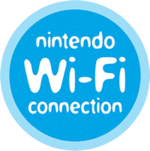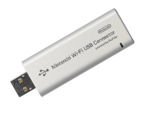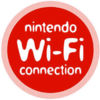Difference between revisions of "Nintendo Wi-Fi Connection"
m (Protected "Nintendo Wi-Fi Connection" ([Edit=Allow only autoconfirmed users] (indefinite) [Move=Allow only autoconfirmed users] (indefinite))) |
|||
| (12 intermediate revisions by 5 users not shown) | |||
| Line 1: | Line 1: | ||
| − | + | [[Image:NintendoWiFiLogo.gif|right|150px]] | |
| − | + | Nintendo Wi-Fi Connection was Nintendo's designated online service for [[Nintendo Wii]] and [[Nintendo DS]] games. | |
| − | |||
| − | |||
| − | |||
| − | |||
| − | |||
| − | |||
| − | |||
| − | |||
| − | |||
| − | |||
| − | |||
| − | |||
| − | |||
| − | |||
| − | |||
| − | |||
| − | |||
| − | |||
| − | |||
| − | |||
| − | |||
| − | |||
| − | |||
| − | |||
| − | |||
| − | |||
| − | + | =About= | |
| − | + | While past Nintendo systems had some variations of online connectivity, the Nintendo Wi-Fi Connection marked Nintendo's first true attempt at a dedicated online service for their systems. It launched in November 2005 with the release of ''[[Mario Kart DS]]''. Players could only connect online through a wireless router. A Nintendo Wi-Fi USB Connector was made for those lacking a router, but it was ultimately discontinued. | |
| − | + | [[Image:NintendoUSBConnector.jpg|left|150px]] | |
| + | |||
| + | Instead of using designated usernames like other platforms, players could only add each other to the Friends Lists by trading a 12 or 16 digit Friend Code. The Friend Code, much to the chagrin of players, was only tied to the game or system it was generated from. Even coming from the same friend, the Friend Code must be entered again for each individual game. While players can set up random matches with strangers, interaction was typically more limited, and trying to obtain strangers' friend codes was near impossible. Nintendo stood by its Friend Code mantra as a means to keep children safe from dangerous stranger. | ||
| + | |||
| + | It was succeeded by the [[Nintendo Network]] service in 2012, which covered the [[3DS]] and [[Wii U]]. On May 20, 2014, the Nintendo Wi-Fi Connection was shut down for all games except for Nintendo Wi-Fi Connection Pay & Play branded games. The DSi Shop also continued running until March 2017 and the Wii Shop until January 2019. | ||
| + | |||
| + | =List of Nintendo Games that supported Nintendo Wi-Fi Connection= | ||
| + | |||
| + | *[[Advance Wars: Days of Ruin]] | ||
| + | *[[Animal Crossing: City Folk]] | ||
| + | *[[Animal Crossing: Wild World]] | ||
| + | *[[Battalion Wars 2]] | ||
| + | *[[Clubhouse Games]] | ||
| + | *[[Custom Robo Arena]] | ||
| + | *[[Daigasso! Band Brothers DX]] | ||
| + | *[[Diddy Kong Racing DS]] | ||
| + | *[[Dr. Mario Online RX]] | ||
| + | *[[Endless Ocean]] | ||
| + | *[[Endless Ocean: Blue World]] | ||
| + | *[[Excitebike: World Rally]] | ||
| + | *[[Excitebots: Trick Racing]] | ||
| + | *[[Fire Emblem: Shadow Dragon]] | ||
| + | *[[Jet Impulse]] | ||
| + | *[[Jump Ultimate Stars]] | ||
| + | *[[Kenkou Ouen Recipe 1000: DS Kondate Zenshuu]] | ||
| + | *[[Kousoku Card Battle: Card Hero]] | ||
| + | *[[Magical Starsign]] | ||
| + | *[[Mario & Sonic at the Olympic Games]] | ||
| + | *[[Mario & Sonic at the Olympic Winter Games]] | ||
| + | *[[Mario Kart DS]] | ||
| + | *[[Mario Kart Wii]] | ||
| + | *[[Mario Strikers Charged]] | ||
| + | *[[Mario vs. Donkey Kong: Minis March Again!]] | ||
| + | *[[Mario vs. Donkey Kong 2: March of the Minis]] | ||
| + | *[[Mawashite Tsunageru Touch Panic]] | ||
| + | *[[Metroid Prime Hunters]] | ||
| + | *[[Minna no Joushiki Ryoku TV]] | ||
| + | *[[My Pokémon Ranch]] | ||
| + | *[[Number Battle]] | ||
| + | *[[Otona no Joushikiryoku Training DS]] | ||
| + | *[[Personal Trainer: Walking]] | ||
| + | *[[Picross 3D]] | ||
| + | *[[Picross DS]] | ||
| + | *[[Planet Puzzle League]] | ||
| + | *[[Pokémon Battle Revolution]] | ||
| + | *[[Pokémon Diamond and Pearl]] | ||
| + | *[[Pokémon HeartGold and SoulSilver]] | ||
| + | *[[Pokémon Mystery Dungeon: Explorers of Sky]] | ||
| + | *[[Pokémon Mystery Dungeon: Explorers of Time and Darkness]] | ||
| + | *[[Pokémon Platinum]] | ||
| + | *[[Pokémon Ranger: Shadows of Almia]] | ||
| + | *[[Sekai no Gohan Shaberu! DS Oryouri Navi]] | ||
| + | *[[Sin & Punishment 2]] | ||
| + | *[[Star Fox Command]] | ||
| + | *[[Style Savvy]] | ||
| + | *[[Super Smash Bros. Brawl]] | ||
| + | *[[Suujin Taisen]] | ||
| + | *[[Takt of Magic]] | ||
| + | *[[Tetris DS]] | ||
| + | *[[The Legend of Zelda: Phantom Hourglass]] | ||
| + | *[[WarioWare D.I.Y.]] | ||
| + | *[[Wi-Fi Taiou Yakuman DS]] | ||
| + | *[[Wii Chess]] | ||
| + | |||
| + | =Nintendo Wi-Fi Connection Pay & Play= | ||
| + | |||
| + | [[Image:Pay&PlayLogo.jpg|right|100px]] | ||
| + | |||
| + | To support the rising trend of Downloadable Content, Nintendo introduced the Pay & Play Logo, a red version of the Wi-Fi Connection Logo. This was intended for games where the user must pay for additional content online. Initially, only Wii games took advantage of it. Because there was no way to access Downloadable Content through the Wii Shop, it could only be downloaded in the supported game. Although Nintendo introduced the option, the only game under their name that used it was ''[[Lonpos]]'', which was released as [[WiiWare]]. | ||
| + | |||
| + | =See Also= | ||
| + | |||
| + | *[[Nintendo Network]] | ||
| + | *[[Ninendo Switch Online]] | ||
Latest revision as of 19:26, 15 July 2023
Nintendo Wi-Fi Connection was Nintendo's designated online service for Nintendo Wii and Nintendo DS games.
About
While past Nintendo systems had some variations of online connectivity, the Nintendo Wi-Fi Connection marked Nintendo's first true attempt at a dedicated online service for their systems. It launched in November 2005 with the release of Mario Kart DS. Players could only connect online through a wireless router. A Nintendo Wi-Fi USB Connector was made for those lacking a router, but it was ultimately discontinued.
Instead of using designated usernames like other platforms, players could only add each other to the Friends Lists by trading a 12 or 16 digit Friend Code. The Friend Code, much to the chagrin of players, was only tied to the game or system it was generated from. Even coming from the same friend, the Friend Code must be entered again for each individual game. While players can set up random matches with strangers, interaction was typically more limited, and trying to obtain strangers' friend codes was near impossible. Nintendo stood by its Friend Code mantra as a means to keep children safe from dangerous stranger.
It was succeeded by the Nintendo Network service in 2012, which covered the 3DS and Wii U. On May 20, 2014, the Nintendo Wi-Fi Connection was shut down for all games except for Nintendo Wi-Fi Connection Pay & Play branded games. The DSi Shop also continued running until March 2017 and the Wii Shop until January 2019.
List of Nintendo Games that supported Nintendo Wi-Fi Connection
- Advance Wars: Days of Ruin
- Animal Crossing: City Folk
- Animal Crossing: Wild World
- Battalion Wars 2
- Clubhouse Games
- Custom Robo Arena
- Daigasso! Band Brothers DX
- Diddy Kong Racing DS
- Dr. Mario Online RX
- Endless Ocean
- Endless Ocean: Blue World
- Excitebike: World Rally
- Excitebots: Trick Racing
- Fire Emblem: Shadow Dragon
- Jet Impulse
- Jump Ultimate Stars
- Kenkou Ouen Recipe 1000: DS Kondate Zenshuu
- Kousoku Card Battle: Card Hero
- Magical Starsign
- Mario & Sonic at the Olympic Games
- Mario & Sonic at the Olympic Winter Games
- Mario Kart DS
- Mario Kart Wii
- Mario Strikers Charged
- Mario vs. Donkey Kong: Minis March Again!
- Mario vs. Donkey Kong 2: March of the Minis
- Mawashite Tsunageru Touch Panic
- Metroid Prime Hunters
- Minna no Joushiki Ryoku TV
- My Pokémon Ranch
- Number Battle
- Otona no Joushikiryoku Training DS
- Personal Trainer: Walking
- Picross 3D
- Picross DS
- Planet Puzzle League
- Pokémon Battle Revolution
- Pokémon Diamond and Pearl
- Pokémon HeartGold and SoulSilver
- Pokémon Mystery Dungeon: Explorers of Sky
- Pokémon Mystery Dungeon: Explorers of Time and Darkness
- Pokémon Platinum
- Pokémon Ranger: Shadows of Almia
- Sekai no Gohan Shaberu! DS Oryouri Navi
- Sin & Punishment 2
- Star Fox Command
- Style Savvy
- Super Smash Bros. Brawl
- Suujin Taisen
- Takt of Magic
- Tetris DS
- The Legend of Zelda: Phantom Hourglass
- WarioWare D.I.Y.
- Wi-Fi Taiou Yakuman DS
- Wii Chess
Nintendo Wi-Fi Connection Pay & Play
To support the rising trend of Downloadable Content, Nintendo introduced the Pay & Play Logo, a red version of the Wi-Fi Connection Logo. This was intended for games where the user must pay for additional content online. Initially, only Wii games took advantage of it. Because there was no way to access Downloadable Content through the Wii Shop, it could only be downloaded in the supported game. Although Nintendo introduced the option, the only game under their name that used it was Lonpos, which was released as WiiWare.


